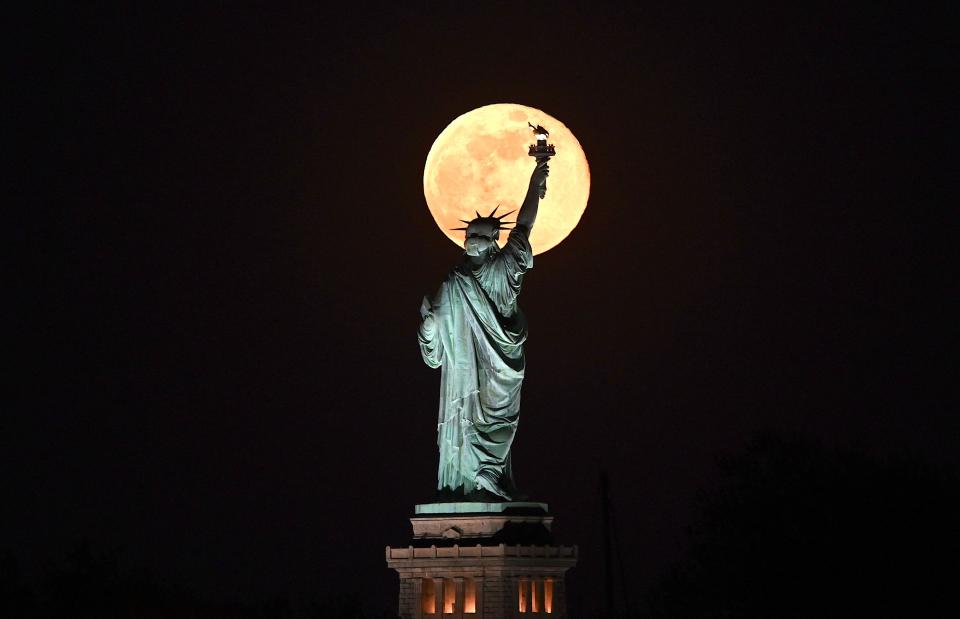Mild May nights are ideal for stargazing – and moon-gazing too! This week, the full “flower” moon will appear in the night sky over the United States. And although the full moon officially occurs on Thursday morning, it will appear plenty full to our eyes starting Tuesday night through early Friday evening, NASA reported.
It’s the final full moon of meteorological spring, which ends as the calendar flips from May to June, AccuWeather said.
Some parts of the world will also see a type of lunar eclipse this week, though it will not be visible here in the U.S. The eclipse should be visible from most of Europe, Africa, Asia, Australia and New Zealand, weather permitting, AccuWeather said.
Monthly skywatcher’s guide to 2024: Eclipses, full moons, comets and meteor showers
When is the full moon?
The moon will be full at 9:53 a.m. (EDT) on Thursday, May 23. It will be below the horizon at this time. Therefore, take a look on Wednesday and Thursday nights to get the best view of the full flower moon, the Old Farmer’s Almanac said.

Why is it called the flower moon?
During spring, flowers start to bloom across North America, inspiring the name of May’s full moon, according to the Old Farmer’s Almanac.
According to the almanac, full moon names “come from a number of places, including Native American, Colonial American, and European sources.” The “flower moon” name has been attributed to the Algonquin people.
What are some other names for the May full moon?
The flower moon is just one name for May’s full moon. Other Native American names include:
-
Budding moon (Cree)
-
Egg laying moon (Cree)
-
Frog moon (Cree)
-
Leaf budding moon (Cree)
-
Planting moon (Dakota, Lakota)
-
Moon of shedding ponies (Oglala)
Where will the penumbral lunar eclipse be visible?
The penumbral lunar eclipse should be visible from most of Europe, Africa, Asia, Australia and New Zealand, weather permitting, AccuWeather meteorologist Brian Lada said. Not as spectacular – or noticeable – as a total lunar eclipse, this rather subtle phenomenon occurs when the moon moves through the outer part of Earth’s shadow, known as the penumbra, according to EarthSky.


When is the next full moon in 2024?
After the flower moon comes the strawberry moon, which will occur on June 21. It’s named for the abundant strawberries that are typically harvested in June.
What are the full moon names for the rest of the year?
-
June 21: Strawberry moon
-
July 21: Buck moon
-
Aug. 19: Sturgeon moon
-
Sept. 17: Harvest moon
-
Oct. 17: Hunter’s moon
-
Nov. 15: Beaver moon
-
Dec. 15: Cold moon
Contributing: Iris Seaton, Asheville Citizen-Times
This article originally appeared on USA TODAY: May 2024 full moon rises Thursday and is called the ‘flower moon’
Source Agencies


